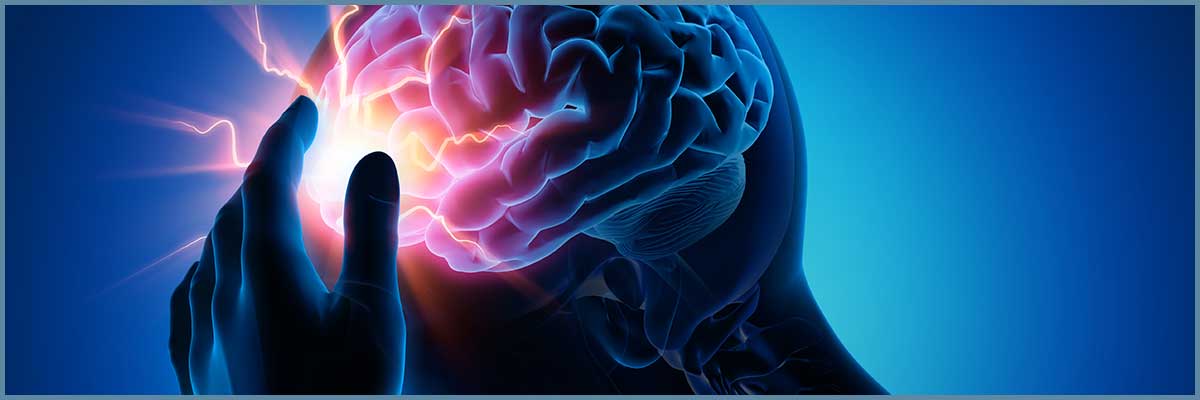About Migraines
There is an average of one migraine sufferer for every four households and headaches are the fourth leading cause of visits to the Emergency Room. Their pain and suffering accounts for over $13 billion dollars in lost productivity and indirect medical costs.
Family History of Migraines
Migraine is most common between the 3rd and 6th decades of life in both men and women. However, migraine affects people of all ages, including children and the elderly. About two-thirds of cases run in families. Four out of five (80 percent) of them report a family history of migraine, but scientists are not sure if this is genetic or a family predisposition. Fluctuating hormone levels may also play a role: migraine affects slightly more boys than girls before puberty, but about two to three times more women than men. Propensity for migraines usually decreases during pregnancy. Did you know that 10% of school age children are affected by migraines, sometimes exhibiting symptoms of abdominal pain for years? Often migraines begin in childhood and worsen during the most productive years. A child has a 50% chance of having migraine if one parent suffers and a 75% chance if both parents suffer.
Migraine is a chronic disorder characterized by recurrent moderate to severe headaches often in association with a number of autonomic nervous system symptoms. The word derives from the Greek (hemikrania), “pain on one side of the head”, from (hemi-), “half”, and (kranion), “skull”.
Typically the headache is unilateral (affecting one half of the head) and pulsating in nature, lasting from 2 to 72 hours. Associated symptoms may include nausea, vomiting, loss of vision, increased sensitivity to light, increased sensitivity to sound, tremors and stroke-like symptoms such as numbness to parts of the body.The pain is generally aggravated by physical activity.
Migraine Aura
Up to one-third of people with migraine headaches perceive an aura: a transient visual, sensory, language, or motor disturbance which signals that the headache will soon occur. Occasionally an aura can occur with little or no headache following it.
A significant body of medical evidence indicates that in certain patients migraines can be caused by the irritation of certain nerve endings in the head and neck. This initiates a cascade of events that eventually leads to a full blown migraine attack. These nerve endings are located in well identified areas of the head and neck and are divided into zones. The irritation is usually caused by muscles that run around or in close proximity to these nerves. Through their normal contraction-relaxation cycles, these muscles can repeatedly squeeze the nerves. In susceptible individuals, the nerve becomes irritated and inflamed to the point that a surge of events is initiated, ultimately resulting in a full blown migraine. The idea of migraine surgery is simple: if we could identify those trigger points, we are able to interrupt the chain reaction by releasing the pressure on the nerve, therefore preventing attacks from starting, or at least weakening those that do occur and making them less frequent.
Botox Diagnostic Test
Botox is utilized as a diagnostic test to determine what trigger point is causing the headaches. Botox was approved in October 2010 for patients with chronic migraines and has proven to be an extremely reliable prognosticator. Of the 60 to 80% of patients who respond favorably to the injection of Botox, 90% of those benefit from migraine surgery. However, lack of response to Botox does not necessarily mean the surgery would not be successful.
80% of patients experienced elimination or significant improvement of their migraine headaches following Botox injection. The effect is temporary, however. A good response to Botox with headache relief or significant improvement, indicates that you could likely benefit from surgery. Surgery provides longer lasting results. Migraine surgery raises the threshold for getting a migraine. So now that the pressure is taken off the nerves, they are healthier and more resistant to triggering factors. Surgery is the only treatment that has the potential for permanently curing migraine headaches.
Migraine Trigger Sites
1. Frontal Zone:
If most of your headaches start around the eyebrows or between the eyes, these are known as frontal or forehead migraines. In frontal migraines, the supraorbital nerve, which comes out of a hole in the brow bone, can be squeezed by the corrugator muscle (also known as the frown muscle). The peripheral trigger theory of migraines was discovered due to frequent cosmetic treatment of this area with Botox to preventing glabellar furrowing and frowning.
2. Temporal zone:
If most of your headaches start in the temple area, or the side of the head, they are known as temporal migraines. There is a significant association in patients who also suffer from temporomandibular joint disorder (TMJ) pain and bruxism (grinding of teeth).
3. Occipital Zone
If most of your headaches start in the back of the head at the base of your skull, these are known as occipital migraines. Patients with occipital migraines will also frequently suffer from neck and upper back pain. In these migraines, the greater occipital nerve is pinched by an upper neck muscle.
4. Nasal Zone
If most of your headaches are located behind the eyes and around the nose, they are known as nasal migraines. They are caused by the nerves in the nose being pinched by a deviated nasal septum or turbinates (structures within the nose). These are often weather dependent and get worse when the nose is congested. Many people mistakenly think they suffer from ‘sinus headaches’ when in fact these are migraines triggered by nasal factors.
Some patients will have more than one zone for the source of their migraine headaches. This is often present when migraines are unilateral, or located on one side of the head.
Your candidacy for surgery will be determined with a consultation with Dr. Hochman.
For more information, visit the American Registry of Migraine Surgeons website.

